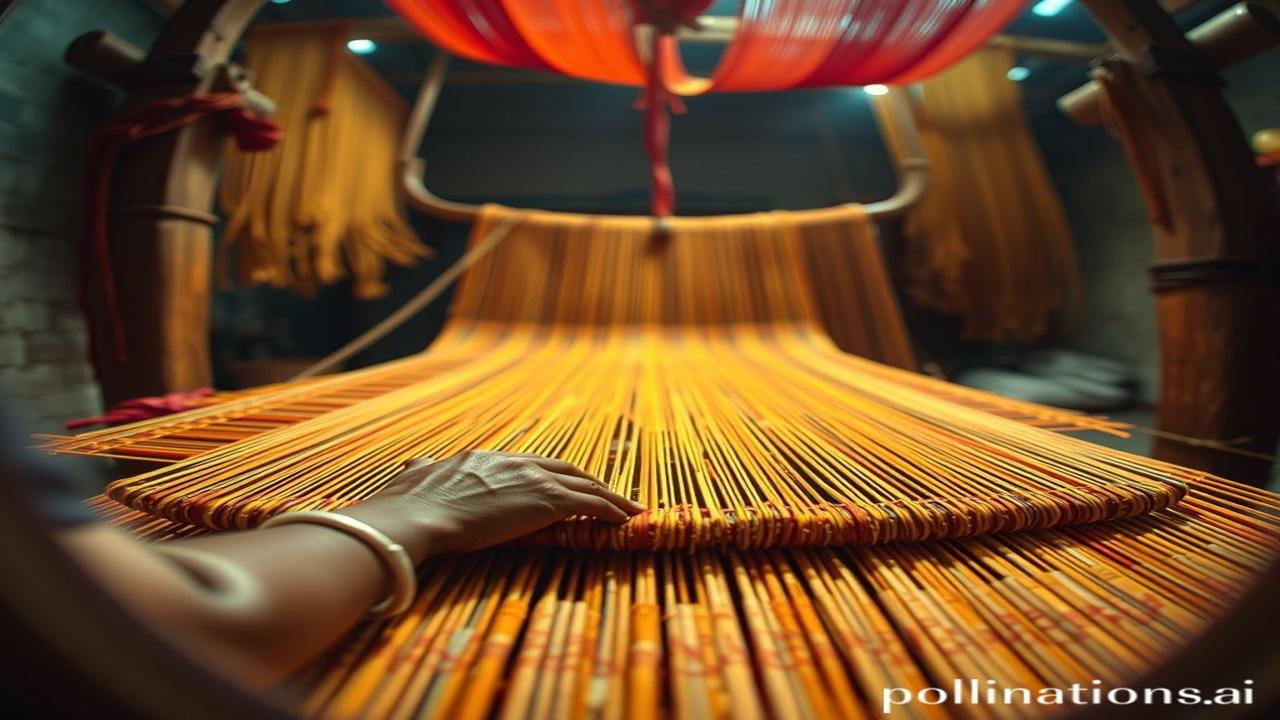Waqt Ke Dhage: Unraveling India’s Traditional Weaving Techniques
Kabhi socha hai, doston, ki yeh jo hum kapde pehente hain, yeh sirf kapda nahi hai? Har dhaage mein ek kahani chupi hai, har rang mein ek itihaas, har bunai mein Bharat ki आत्मा. Imagine yourself walking through a bustling marketplace in ancient India, the air thick with the scent of natural dyes, the rhythmic clack of looms filling your ears. Yeh hai hamari weaving heritage, ek aisa khazana jo generations se chala aa raha hai.
The Woven Tapestry of Time: A Historical Glimpse
Traditional weaving techniques are not just a craft; they are a living document of India’s history. They span millennia, with evidence of woven fabrics dating back to the Indus Valley Civilization (c. 3300-1300 BCE). Think about it – 5000 years! From the simple cotton textiles of ancient times to the elaborate silks of the Mughal era, each region developed its unique style and technique.
Why is it important? Because weaving is intertwined with our culture, economy, and identity. Yeh sirf kapda nahi hai, yeh sanskriti hai. Different dynasties, trade routes, and religious beliefs influenced weaving patterns and motifs. The famous Patola sarees of Gujarat, for example, were coveted by royalty and are still considered heirloom pieces today. Benarasi silk, Kanjeevaram, Chanderi – yeh sirf naam nahi, yeh dharohar hain.
Zameeni Sach: The Lives Woven into Cloth
Imagine a weaver, sitting at his loom, the sun streaming through the dusty window. His hands, gnarled and strong from years of practice, move with practiced ease, transforming simple threads into intricate designs.
Dialogue:
“Beta, yeh jo rang hai na,” he might say to his son, “yeh sirf rang nahi, yeh hamari zindagi ka rang hai. Yeh laal rang, shakti ka, prem ka. Yeh neela rang, aasman ka, samandar ka.”
“Pitaji,” the son replies, “lekin aaj kal toh sab machine se bante hain. Haath se kaun bunta hai?”
The weaver sighs. “Machine toh kapda bana sakti hai, beta, lekin kala nahi. Kala toh dil se aati hai, mehnat se aati hai.”
Ma Rukmini ने aaj naye kapde pehne, kyunki mandir mein utsav tha. The vibrant colors of her saree reflected the joy and devotion in her heart. These clothes weren’t just garments; they were symbols of celebration, tradition, and belonging.
Dharohar Aur Pehchan: Weaving India into the Modern World
Even today, traditional weaving techniques continue to resonate with us. We see them in the vibrant colors of festival clothes, in the intricate designs of carpets, and in the delicate embroidery on shawls. They represent a connection to our roots, a reminder of our rich heritage.
Bharatiyata: Traditional weaves are integral to our sense of Indianness. They embody the spirit of craftsmanship, the value of hard work, and the beauty of imperfection. In a world dominated by mass-produced goods, these handwoven textiles stand as a testament to the power of human creativity and skill.
Mazedar Tathya Ya Bhram-Bhanjak: The Hidden Threads
Myth-Buster: Log samajhte hain ki handloom kapda kharab hota hai, jaldi phat jaata hai. Lekin asli sach yeh hai ki handloom kapda zyada mazboot hota hai, kyunki usme dhaage tight bune hote hain. Machine-made fabrics often prioritize speed over quality.
Drishya Aur Bhavnayein: A Sensory Symphony
Imagine the smell of the earth after a monsoon shower, mingled with the scent of indigo dye. Feel the rough texture of raw silk against your skin, the smooth coolness of cotton. Hear the rhythmic clack of the loom, the chatter of women as they spin yarn, the laughter of children playing in the courtyard. The sounds, smells, and textures of a weaving village are a sensory symphony, a feast for the soul.
Antim Vichar Ya Uddharan: The Eternal Warp and Weft
Our traditional weaving techniques are more than just a craft; they are a cultural legacy that must be preserved and cherished. They represent the spirit of India, the ingenuity of its people, and the enduring power of tradition.
“Tantu Vitantuscha Karmabhih” – “The warp and weft of life are woven by our actions.”
